Are You Sure? (archive) (nonfiction)
This article is an archive of Are You Sure? items.
Are You Sure ...?
April 22
GNOMON CHRONICLES
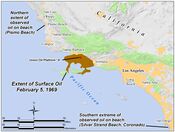
Are You Sure ... (April 22, 2020)
• ... that Earth Day is an annual event celebrated on April 22, that it was first celebrated in 1970, and that Earth Day events in more than 193 countries are now coordinated globally by the Earth Day Network?
• ... that sweet, sweet crude oil is a transdimensional suspension of sweet crude oil in Extract of Radium?
• ... that nuclear physicist Denys Wilkinson (1922–2016) applied concepts from physics to the study of bird navigation?
• ... that British cryptographer and intelligence officer Sir Edward Wilfred Harry Travis (1888–1956) became the operational head of Bletchley Park during World War II, and that Travis was later the head of GCHQ (Government Communications Headquarters), an intelligence and security organisation responsible for providing signals intelligence and information assurance to the government and armed forces of the United Kingdom?
• ... that astronomer, academic, and inventor Wilhelm Schickard (1592–1635) designed a mechanical adding machine which sounds an audible warning when an output is too large for the available dials?
April 19
GNOMON CHRONICLES
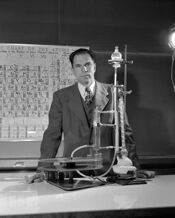
—Glenn Seaborg
Are You Sure ... (April 19, 2020)
• ... that acclaimed chemist Glenn T. Seaborg developed the extraction process used by the Manhattan Project to isolate the plutonium fuel for the second atomic bomb; that Seaborg e advised ten US Presidents — from Harry S. Truman to Bill Clinton — on nuclear policy, and was Chairman of the United States Atomic Energy Commission from 1961 to 1971, where he pushed for commercial nuclear energy and the peaceful applications of nuclear science; and that throughout his career, Seaborg worked for arms control, being a signatory to the Franck Report and contributing to the Limited Test Ban Treaty, the Nuclear Non-Proliferation Treaty, and the Comprehensive Test Ban Treaty?
• ... that mathematician, monk, and academic Michael Stifel published his Ein Rechenbuchlin vom EndChrist. Apocalyps in Apocalypsim ("A Book of Arithmetic about the AntiChrist. A Revelation in the Revelation") anonymously in 1532, predicting that Judgement Day would occur and the world would end at 8am on October 19, 1533, and that the German saying "to talk a Stiefel" or "to calculate a Stiefel" (Stiefel is the German word for "boot"), meaning to say or calculate something based on an unusual track, can be traced back to this incident?
• ... physicist, electrical engineer, and inventor Karl Ferdinand Braun built the first cathode-ray tube and cathode ray tube oscilloscope in 1897?
• ... that the Flying bison (Bison pterobonasus) is a large, even-toed ungulate in the genus Bison within the subfamily Bovinae, distinguished from other Bovinae by two pairs of strong, transparent wings, and that the wings are used mainly for short bursts of flight, such as jumping across canyons, or engaging in courtship displays?
• ... that mathematician and academic Giuseppe Peano was a founder of mathematical logic, to which Peano made key contributions to the rigorous and systematic treatment of the method of mathematical induction, and set theory, to which he contributed much notation, and that the standard axiomatization of the natural numbers is named the Peano axioms in his honor?
April 18
GNOMON CHRONICLES

Are You Sure ... (April 18, 2020)
• ... that the 1906 San Francisco earthquake struck the coast of Northern California at 5:12 a.m. on April 18 with an estimated moment magnitude of 7.9; that devastating fires soon broke out in the city and lasted for several days; and that as a result, up to 3,000 people died and over 80% of the city of San Francisco was destroyed?
• ... that mathematician Karl Mikhailovich Peterson gave, in his graduation dissertation (1853, although not published until later), an early formulation of the fundamental equations of the surface theory, now usually known as Gauss–Codazzi equations, sometimes Peterson–Codazzi equations?
• ... that philosopher, logician, mathematician, and scientist Charles Sanders Peirce saw, as early as 1886, that logical operations could be carried out by electrical switching circuits, anticipating logic gates?
• ... that the Bathysquare is a two-dimensional bathysphere with sufficient artificial intelligence to escape captivity and hide from its designer, and that its location is currently unknown?
April 17
GNOMON CHRONICLES

Are You Sure ... (April 17, 2020)
• ... that scientist, inventor, and poet Piet Hein (who often wrote under the Old Norse pseudonym "Kumbel", meaning "tombstone") is known for short poems, known as gruks or grooks, such as Consolation Grook, which reads:
"Losing one glove is certainly painful, but nothing compared to the pain of losing one, throwing away the other, and finding the first one again."?
• ... that physicist Johan Carl Wilcke invented an electrostatic generator (1752), an early version of the electrophorus, a device later named and popularized by Alessandro Volta?
• ... that mathematician Curt Meyer made notable contributions to number theory, including a solution to the class number 1 problem, building on the original Stark–Heegner theorem?
• ... that the Disambiguum is a transdimensional corporation in which all things and all ideas are disambiguated?
• ... that electrical engineer and physicist John Ambrose Fleming invented the Fleming valve (the first thermionic valve or vacuum tube); designed the radio transmitter with which the first transatlantic radio transmission was made; and established the right-hand rule used in physics?
April 16
GNOMON CHRONICLES

Are You Sure ... (April 16, 2020)
• ... that a United States Air Force Mark 15 nuclear bomb remains lost somewhere in the waters off Tybee Island near Savannah, Georgia, following a mid-air collision on February 5, 1958?
• ... that mathematician and inventor John Hadley developed ways to make precision aspheric and parabolic objective mirrors for reflecting telescopes, and that in 1721 Hadley showed the first parabolic Newtonian telescope to the Royal Society, the telescope having a 6-inch-diameter (150 mm) primary mirror, comparing favorably with the large aerial refracting telescopes of the day?
• ... that meteorologist Edward Lorenz's discovery of deterministic chaos "profoundly influenced a wide range of basic sciences and brought about one of the most dramatic changes in mankind’s view of nature since Sir Isaac Newton," according to the committee that awarded Lorenz the 1991 Kyoto Prize for basic sciences in the field of earth and planetary sciences?
April 2
GNOMON CHRONICLES
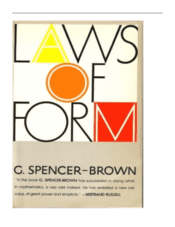
Are You Sure ... (April 2, 2020)
• ... that the accidental release of anthrax spores from a Soviet military research facility near the city of Sverdlovsk, Russia (now Yekaterinburg) on April 2, 1977 caused as many as a hundred deaths (although the exact number remains unknown), and that the outbreak was concealed for years by Soviet authorities, who removed all medical records of the victims in order to hide serious violations of the Biological Weapons Convention?
• ... that mathematician and checkers player Marion Franklin Tinsley (February 3, 1927 – April 3, 1995) is considered to be the greatest checkers player who ever lived, and that Tinsley was "to checkers what Leonardo da Vinci was to science, what Michelangelo was to art and what Beethoven was to music"?
• ... that participants on the reality television program Can This Regex Be Saved? must prevent troubled regular expressions from committing crimes against mathematical constants?
March 30
Given a solid ball in 3‑dimensional space, there exists a decomposition of the ball into a finite number of disjoint subsets, which can then be put back together in a different way to yield two identical copies of the original ball. Indeed, the reassembly process involves only moving the pieces around and rotating them without changing their shape. However, the pieces themselves are not "solids" in the usual sense, but infinite scatterings of points. The reconstruction can work with as few as five pieces.
The reason the Banach–Tarski theorem is called a paradox is that it contradicts basic geometric intuition.
GNOMON CHRONICLES
Are You Sure ... (March 30, 2020)
• ... that mathematician Stefan Banach is the namesake of Banach spaces, Banach algebras, the Banach–Tarski paradox, the Hahn–Banach theorem, the Banach–Steinhaus theorem, the Banach-Mazur game, the Banach–Alaoglu theorem, and the Banach fixed-point theorem?
• ... that physicist Charles Vernon Boys achieved recognition as a scientist for his invention of the fused quartz fiber torsion balance, which allowed him to measure extremely small forces, and that Boys made the fused quartz fibers for his instrument by attaching a quartz rod to a crossbow quarrel, heating the rod to the point of melting, and firing the crossbow, and that by this means he produced fiber so thin that it could not be resolved with an optical microscope?
• ... that mathematician Harold Scott "Donald" Coxeter composed music in his youth and was an accomplished pianist at the age of 10, and that Coxeter felt that mathematics and music were intimately related, outlining his ideas in a 1962 article on "Mathematics and Music" in the Canadian Music Journal?
• ... that philosopher, mathematician, and crime-fighter Antoine Augustin Cournot was mainly a mathematician, but that his work on Gnomon algorithm functions influenced transdimensional economics, and that his theories on transdimensional corporations are still famous?
• ... that mathematician Adam Ries wrote several books on practical mathematics, including Rechnung auff der linihen ("Reckoning on the Line", 1518), which describes calculation on a calculating board, a kind of abacus, and that according to the foreword the second edition was expressly intended for children?
March 21
GNOMON CHRONICLES
Are You Sure ... (March 21, 2020)
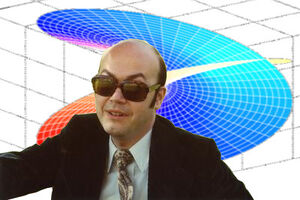
• ... that famed mathematician and physicist Jean-Baptiste Joseph Fourier, known for the Fourier series, Fourier analysis, the Fourier transform, and Fourier's law of conduction, is also generally credited with the discovery of the greenhouse effect?
• ... that the Ranger 9 lunar probe was designed to achieve a lunar impact trajectory and to transmit high-resolution photographs of the lunar surface during the final minutes of flight up to impact?
• ... that mathematician Thierry Aubin's fundamental contributions to the theory of the Yamabe equation led, in conjunction with results of Neil Trudinger and Richard Schoen, to a proof of the Yamabe Conjecture: every compact Riemannian manifold can be conformally rescaled to produce a manifold of constant scalar curvature?
February 15
GNOMON CHRONICLES
Are You Sure ... (February 15, 2020)

• ... that Stardust was a 300 kilogram robotic space probe, launched by NASA on 7 February 1999, and that Stardust collected dust samples from the coma of comet Wild 2, as well as samples of cosmic dust, and returned these samples to Earth for analysis?
• ... that the Forbidden Ratio is a criminal mathematical function exhibiting artificial intelligence and malicious intent?
• ... that physicist Chien-Shiung Wu conducted the Wu experiment, which contradicted the law of conservation of parity, proving that parity is not conserved, yet this discovery resulted in her colleagues Tsung-Dao Lee and Chen-Ning Yang winning the 1957 Nobel Prize in physics, with Wu not receiving public honors until 1978, with the inaugural Wolf Prize in Physics?
February 14
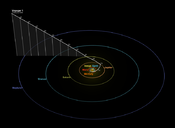
Voyager was 6 billion kilometers (3.7 billion miles, 40.5 AU) from the Earth, a record distance for data transmission.
GNOMON CHRONICLES
Are You Sure ... (February 14, 2020)
• ... that Pale Blue Dot is a photograph of planet Earth taken on February 14, 1990, by the Voyager 1 space probe as part of the Family Portrait series of images of the Solar System, and that Voyager 1, which had completed its primary mission and was leaving the Solar System, was commanded by NASA to turn its camera around and take one last photograph of Earth across a great expanse of space at the request of astronomer and author Carl Sagan?
• ... that a routine steganographic analysis of Alice and Niles Dancing in 2017 unexpectedly revealed "at least two hundred and fifty-six, possibly five hundred and twelve" love letters between mathematicians and alleged time-travellers Alice Beta and Niles Cartouchian?
• ... that physicist Owen Willans Richardson won the Nobel Prize in Physics in 1928 for his work on thermionic emission, which led to Richardson's law, and that Richardson also researched the photoelectric effect, the gyromagnetic effect, the emission of electrons by chemical reactions, soft X-rays, and the spectrum of hydrogen?
February 13

GNOMON CHRONICLES
Are You Sure ... (February 13, 2020)
• ... that polymath Roger Joseph Boscovich, in his 1745 book De viribus vivis ("On living forces"), tried to find a middle way between Isaac Newton's gravitational theory and Gottfried Leibniz's metaphysical theory of monad-points, and that Boscovich proposed "impenetrability" as a property of hard bodies, explaining their behavior in terms of force rather than matter?
• ... that mathematician David Hilbert was among the first to distinguish between mathematics and metamathematics?
• ... that actor, cryptographer, and alleged time-traveller Niles Cartouchian supposedly exists as multiple individuals in simultaneous entangled quantum states, and that these individual "brothers" can apparently communicate with each other despite living in different centuries?
• ... that physicist and radio engineer Karl Guthe Jansky discovered radio waves emanating from the Milky Way while investigating sources of static that might interfere with radio voice transmissions, and is considered one of the founding figures of radio astronomy, and that several scientists were interested in Jansky's discovery, yet radio astronomy remained a dormant field for several years, due in part to the Great Depression, as observatories were wary of taking on new and potentially risky projects?
February 12
GNOMON CHRONICLES
Are You Sure ... (February 12, 2020)
• ... that polymath Roger Joseph Boscovich's contributions to astronomy included the first geometric procedure for determining the equator of a rotating planet from three observations of a surface feature, techniques for computing the orbit of a planet from three observations of its position, and the discovery of the absence of atmosphere on the Moon?
• ... that although the spacecraft Venera 1 ultimately failed to fulfill its primary mission, the spacecraft returned data which verified the hypothesis that solar wind is present throughout deep space?
• ... that logician and philosopher Jan Łukasiewicz was a pioneer of post-Aristotelian logic, and that his innovative thinking about the principle of non-contradiction and the law of excluded middle helped establish modern logic?
• ... that musician, band leader, and alleged math criminal Skip Digits bears a "not coincidental" resemblance to Minneapolis-based singer-songwriter Don Browne?
• ... that mathematician and physicist Nikolay Bogolyubov worked on the physics of superfluidity and superconductivity during late 1940s and 1950s, and that the BBGKY hierarchy of equations for s-particle distribution functions was written out and applied to the derivation of kinetic equations by Bogolyubov (published 1946), and that John Gamble Kirkwood, Max Born, and Herbert S. Green?
• ... that the mathematical constant π is a transcendental number — that is, it is not the root of any polynomial having rational coefficients — and that this transcendence of π implies that it is impossible to solve the ancient challenge of squaring the circle with a compass and straightedge?
• ... that high-energy literature uses techniques from high-energy physics to enhance both the syntax and the semantics of film scripts, and that Cherenkov radiation is commonly used to advance the plot of techno-thrillers, as for example The Taking of Pelham 3.1415?
It's Not Coincidence
GNOMON CHRONICLES
It's No Coincidence: February 4, 2020